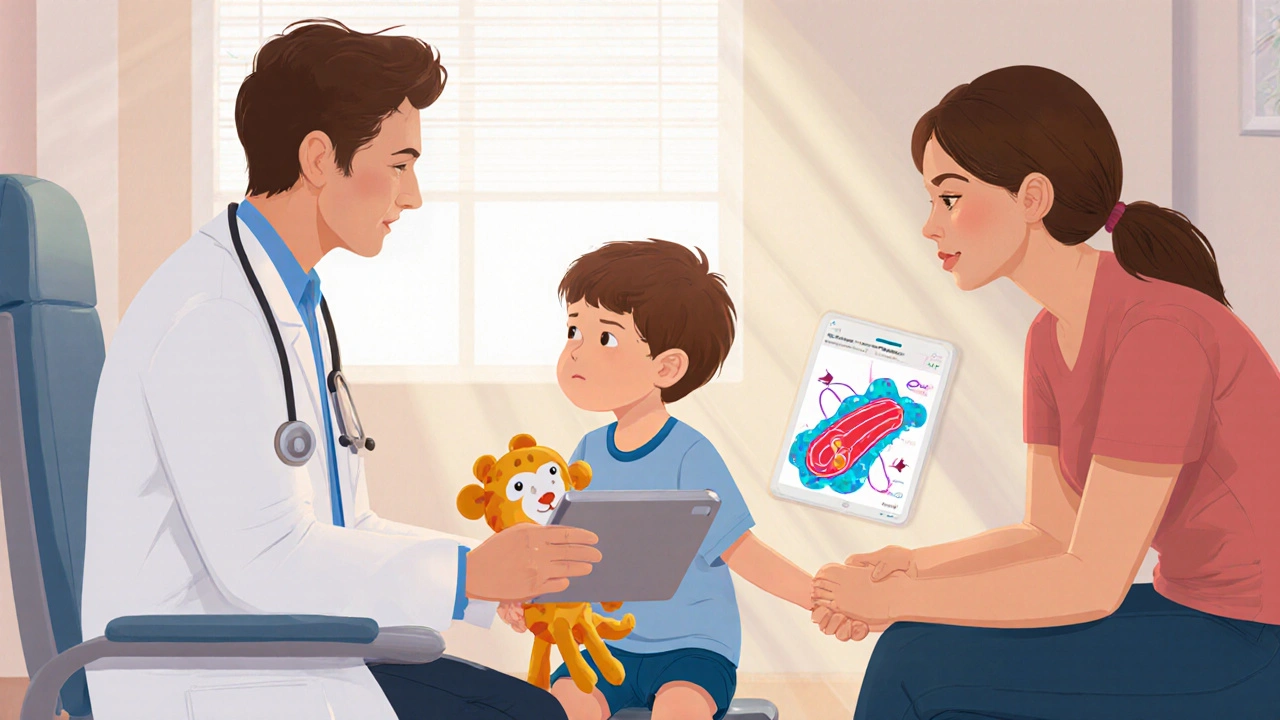Rhabdomyosarcoma: What It Is, Why It Matters, and How It’s Treated
When talking about Rhabdomyosarcoma, a malignant tumor that arises from skeletal muscle tissue, often affecting children and teens. Also known as RMS, it falls under the broader category of soft tissue sarcoma, cancers that develop in muscles, fat, nerves, fibrous tissues, blood vessels, or deep skin layers. Because it predominantly occurs in the pediatric population, it’s a major focus of pediatric oncology, the branch of medicine that treats cancers in children and adolescents. Understanding RMS means looking at its biology, the way doctors fight it with chemotherapy, drug regimens that target rapidly dividing cells, and the role of radiation therapy, high‑energy rays used to shrink or eliminate tumors. These treatments are often combined in multidisciplinary care plans, and ongoing clinical trials, research studies testing new therapies or treatment strategies, aim to improve survival rates and reduce side effects.
Key Aspects of Rhabdomyosarcoma
Rhabdomyosarcoma can appear anywhere in the body, but the head and neck, genitourinary tract, and extremities are the most common sites. The disease is classified into two main histologic subtypes: embryonal, which tends to grow slower and has a better prognosis, and alveolar, which is more aggressive and often spreads early. Early diagnosis hinges on recognizing symptoms like a painless lump, swelling, or difficulties with movement, followed by imaging and a biopsy to confirm the subtype. Once identified, treatment typically follows a triple‑modality approach: surgery to remove as much tumor as possible, chemotherapy to target hidden cells, and radiation therapy to control local spread. Pediatric oncologists rely on protocols such as the Children’s Oncology Group (COG) regimens, which standardize drug combinations and dosing schedules. Advances in molecular genetics have revealed specific fusion proteins, like PAX‑FOXO1, that drive the alveolar type, opening doors for targeted therapies currently under investigation in clinical trials. Supportive care—nutrition, physical therapy, and psychosocial support—is also crucial because treatment can impact growth, organ function, and quality of life.
Below you’ll find a curated collection of articles that dive deeper into each of these areas. Whether you’re looking for practical tips on managing side effects, insights into the latest trial results, or easy‑to‑understand explanations of the disease’s biology, the posts below cover a wide range of topics that help demystify Rhabdomyosarcoma and guide patients, families, and healthcare professionals alike.
Rhabdomyosarcoma in Children: Essential Guide for Parents

A clear, parent‑focused guide on rhabdomyosarcoma in children covering symptoms, diagnosis, treatment options, side‑effects and support resources.
